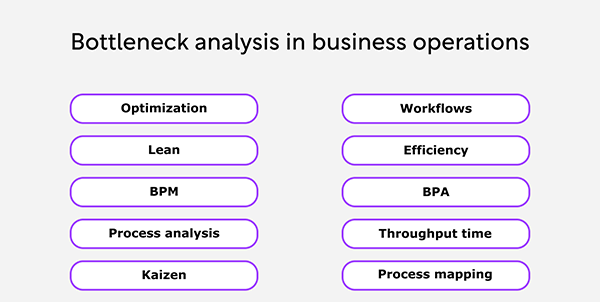The Returns Bottleneck Is Real, Here’s the Smart Way to Fix It
Retailers allocate substantial resources to marketing and fulfillment; however, they frequently neglect the implications of reverse sales.
While returns may lack the allure of other business processes, they represent an increasingly significant bottleneck that diminishes profitability, hampers operational efficiency, and leads to customer dissatisfaction.
As the volume of returns escalates, particularly within the realm of e-commerce, traditional manual processing methods are proving inadequate. Consequently, retailers are increasingly adopting more sophisticated and streamlined systems designed to alleviate the challenges associated with returns.
In this blog post, we’ll break down why returns have become such a costly choke point and how modern software helps solve return issues by saving time, cutting losses, and improving customer experience along the way.
Let’s begin!
Key Takeaways
- Understanding why returns have become a retail nightmare
- Looking at some hidden costs
- Discovering the positive impacts of this software
- Uncovering the technology ahead
Why Returns Have Become a Retail Nightmare
Increased online shopping means more returns and way more complexity. Each return involves several steps, including authorization, shipping, inspection, restocking, and refunds. It’s like a reverse assembly line that nobody planned for.
Without a dedicated system, this process is slow and error-prone. Staff waste hours on manual tasks that could be automated. Refunds lag behind customer expectations. Customers get frustrated and take it out on your support team.
And as volume increases, the chaos only gets worse. What starts as a few missed emails turns into operational drag that affects every department and slows down your entire business.
Interesting Facts
A poor returns experience can significantly impact customer loyalty, with 85% of consumers unlikely to purchase again from a company with a difficult returns process.
The Hidden Costs Are Adding Up Fast
Returns aren’t free, and most retailers underestimate how much they actually cost. They carry hidden costs in labor, shipping both ways, repackaging, and lost revenue from items that can’t be resold at full price.
Worse, a bad return experience can drive away future sales that are worth way more than the original purchase. Retailers that rely on pieced-together systems like spreadsheets, emails, and disconnected tools often lose money without realizing it.
Delays, miscommunications, and slow refund cycles damage brand trust and create unnecessary friction that could be avoided with smarter systems.
What Smart Returns Software Actually Does
Returns management software replaces manual tasks with automated, centralized workflows. That includes branded, self-service return portals that look professional, instant label generation that saves time, and status tracking for both staff and customers.
It also integrates with e-commerce platforms and inventory systems so data flows smoothly. Plus, it handles fast, automated refund or exchange processing without manual approval steps.
It gives your team visibility and control, speeds up every step, and reduces the burden on customer service. Instead of chasing down returns, your team can focus on growth.
Intriguing Insights
This infographic shows a bottleneck analysis in business operations
Faster Returns Actually Create Happier Customers
Returns are part of the customer experience whether you like it or not. If they’re slow or confusing, even a great product won’t keep someone coming back to your store.
Smarter systems allow customers to start a return on their own, get timely updates, and feel in control of the process. They are not forced to wait for business hours or explain their situation multiple times.
When shoppers know the process is fair, fast, and painless, they’re more likely to stick with your brand even if the item didn’t work out. A good returns experience can actually build loyalty.
Scaling Without Breaking Your Team
As your business grows, the return volume scales too. When handling hundreds or even thousands of returns every week, manual processes quickly become unsustainable.
Smart returns tools are built to scale without requiring you to hire more support staff. They prevent bottlenecks during busy seasons like holidays when return volumes spike.
They give your ops team the tools they need to move faster with fewer errors. This is how retailers stay lean and profitable while still delivering a better experience.
The Technology Already Exists
Good news: there is already technology that has been shown to work to fix returns bottlenecks. Modern returns management platforms integrate with existing systems, automate routine tasks, and provide the visibility that manual processes lack.
Most platforms offer plug-and-play integrations with popular ecommerce systems, so implementation doesn’t require a complete overhaul of your current setup.
The ROI is usually clear within a few months as you save time, reduce errors, and improve customer satisfaction scores.
Stop Letting Returns Slow You Down
Though returns can be a pain, they don’t have to slow down your whole business. By upgrading to smarter returns software, retailers gain back control, reduce unnecessary costs, and deliver a smoother experience for everyone involved.
In today’s fast-paced retail environment, a messy returns process isn’t just annoying, it’s a risk to your margins and your customer loyalty. The smart fix is already here. It’s time to use it.
Frequently Asked Questions
Ans: To identify bottlenecks in a process, you can use techniques like process mapping, performance metric analysis, and stakeholder feedback.
Ans: The bottleneck product or service is primarily characterized by low levels of specification and high levels of individualization
Ans: Since bottlenecking is counterproductive and leads to a reduction in production efficiency, eliminating bottlenecks is key to increasing profitability.











